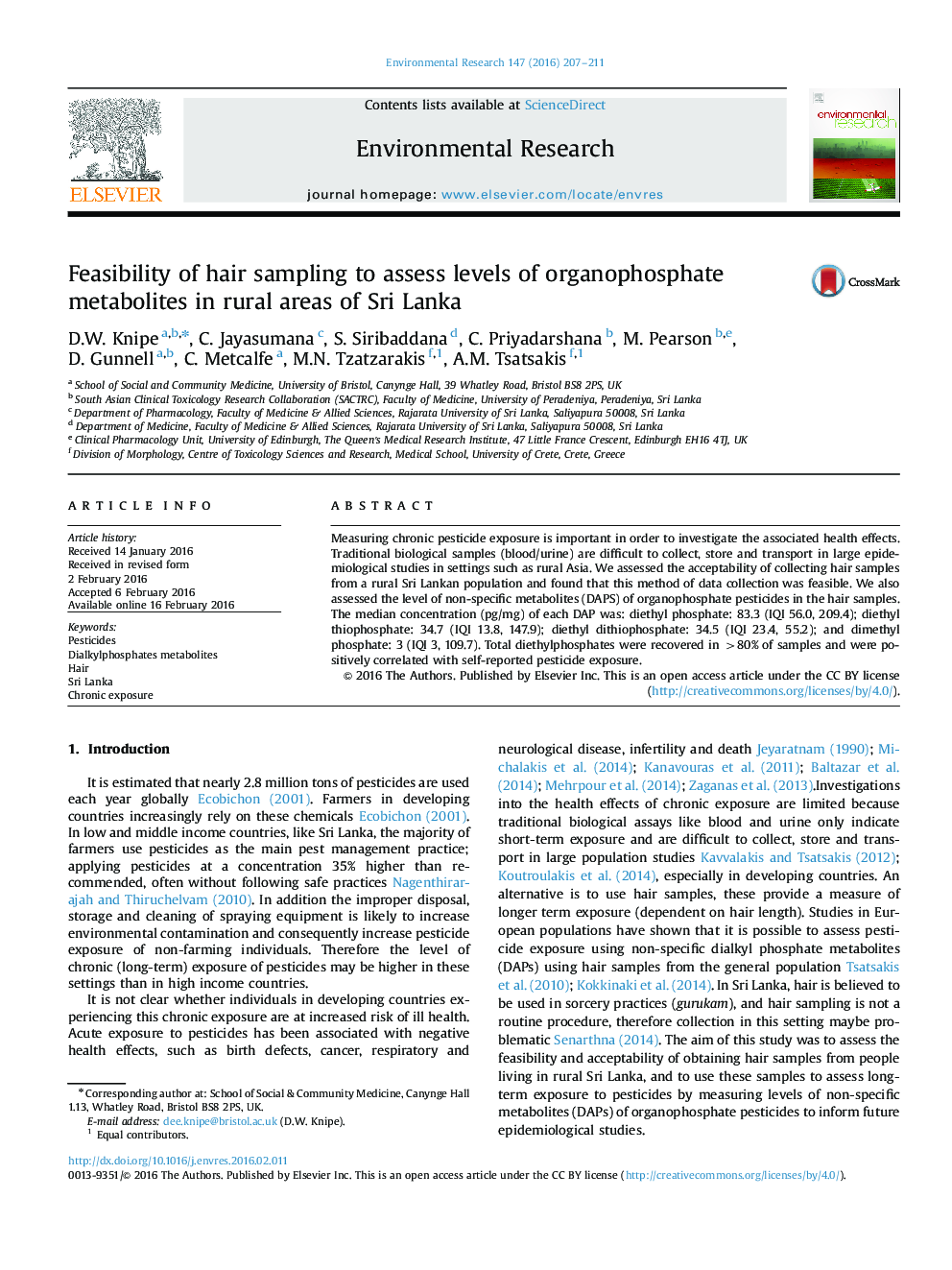| Article ID | Journal | Published Year | Pages | File Type |
|---|---|---|---|---|
| 6351736 | Environmental Research | 2016 | 5 Pages |
Abstract
Measuring chronic pesticide exposure is important in order to investigate the associated health effects. Traditional biological samples (blood/urine) are difficult to collect, store and transport in large epidemiological studies in settings such as rural Asia. We assessed the acceptability of collecting hair samples from a rural Sri Lankan population and found that this method of data collection was feasible. We also assessed the level of non-specific metabolites (DAPS) of organophosphate pesticides in the hair samples. The median concentration (pg/mg) of each DAP was: diethyl phosphate: 83.3 (IQI 56.0, 209.4); diethyl thiophosphate: 34.7 (IQI 13.8, 147.9); diethyl dithiophosphate: 34.5 (IQI 23.4, 55.2); and dimethyl phosphate: 3 (IQI 3, 109.7). Total diethylphosphates were recovered in >80% of samples and were positively correlated with self-reported pesticide exposure.
Related Topics
Life Sciences
Environmental Science
Health, Toxicology and Mutagenesis
Authors
D.W. Knipe, C. Jayasumana, S. Siribaddana, C. Priyadarshana, M. Pearson, D. Gunnell, C. Metcalfe, M.N. Tzatzarakis, A.M. Tsatsakis,
